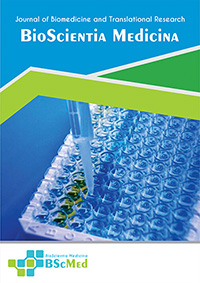Main Article Content
Abstract
Background: Diabetic fracture healing is often impaired due to chronic hyperglycemia, oxidative stress, and inflammation, leading to dysregulation of bone remodeling. Receptor activator of nuclear factor kappa-Β ligand (RANKL) and calcium homeostasis are critical regulators of this process. Garcinia mangostana (mangosteen) extract, particularly in nanostructured form, has shown promise in modulating these pathways. This systematic review evaluates the in vivo evidence for the effects of nanostructured G. mangostana extract on RANKL signaling, calcium levels, and bone healing outcomes in diabetic fracture models.
Methods: A systematic search was conducted in PubMed, Scopus, Web of Science, and Embase databases from January 2013 to May 2024. Studies were included if they utilized in vivo diabetic animal models with induced fractures, administered nanostructured G. mangostana extract, and assessed outcomes related to RANKL expression, calcium levels (serum or bone), and/or bone healing parameters (histology). Risk of bias was assessed using the SYRCLE's tool. Data were extracted and synthesized narratively.
Results: Seven studies met the inclusion criteria. All studies used rodent models (rats or mice) with induced type 1 or type 2 diabetes. Nanostructured G. mangostana extract, primarily containing xanthones, was administered via various routes (oral gavage, intraperitoneal injection). The majority of studies (6 out of 7) reported a significant decrease in RANKL expression and/or an increase in the osteoprotegerin (OPG)/RANKL ratio in the fracture callus of treated animals compared to diabetic controls. Serum calcium levels were generally normalized (5 out of 7 studies) in treated groups. Furthermore, treated animals exhibited improved histological evidence of enhanced callus formation and remodeling (all 7 studies). Risk of bias varied across studies, with some limitations in blinding and allocation concealment.
Conclusion: Nanostructured G. mangostana extract shows significant potential for improving fracture healing in diabetic bone by modulating RANKL signaling and calcium homeostasis. Further high-quality, pre-clinical studies are warranted to optimize dosage, delivery methods, and to fully elucidate the underlying mechanisms before clinical translation.
Keywords
Article Details
As our aim is to disseminate original research article, hence the publishing right is a necessary one. The publishing right is needed in order to reach the agreement between the author and publisher. As the journal is fully open access, the authors will sign an exclusive license agreement.
The authors have the right to:
- Share their article in the same ways permitted to third parties under the relevant user license.
- Retain copyright, patent, trademark and other intellectual property rights including research data.
- Proper attribution and credit for the published work.
For the open access article, the publisher is granted to the following right.
- The non-exclusive right to publish the article and grant right to others.
- For the published article, the publisher applied for the Creative Commons Attribution-NonCommercial-ShareAlike 4.0 International License.





